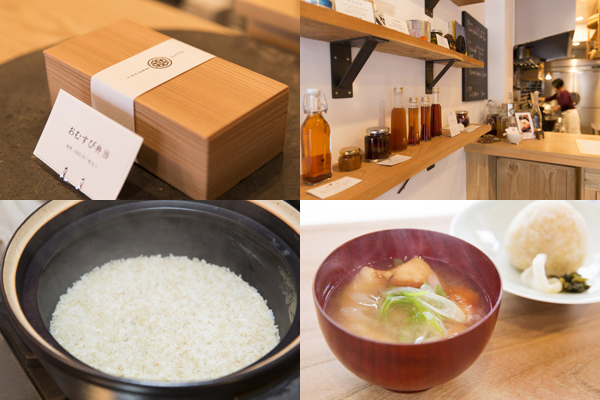Discover the Tradition of Japanese Rice Balls: The Art of Omusubi
Apr 08,2015
Discover the Tradition of Japanese Rice Balls: The Art of Omusubi
Apr 08,2015
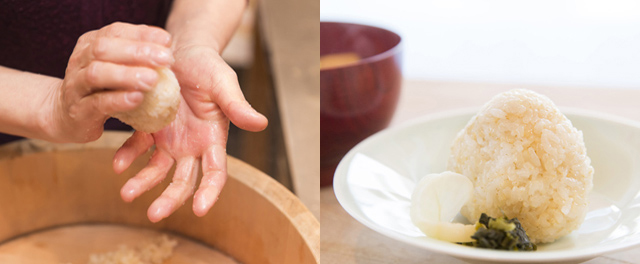
Kick off your day with a omusubi
Omusubi Marusankaku — a omusubi [rice ball] specialty shop — stands alone in a quiet space in the Jingumae district (in Tokyo’s Shibuya Ward). Owner Okura Chieko is also a rice ball researcher who provides various places for people learn about the magic of omusubi, including workshops where kids and adults can enjoy making rice balls together.
“When people put something warm in their body, they feel reassured and relaxed. A delicious breakfast gives you the energy to tackle the day. I get a thrill seeing firsthand how customers react as they eat. Mornings are definitely a special time for me.”
The shop uses only carefully selected pesticide-free, reduced-pesticide, or organic domestic rice. The rice is scrupulously cooked and then, together with seasonal, additive-free ingredients, formed by hand into rice balls one by one.
The morning menu consists of salted omusubi, miso soup, and assorted pickles. This simple, but sumptuous breakfast brings a little joy every day.

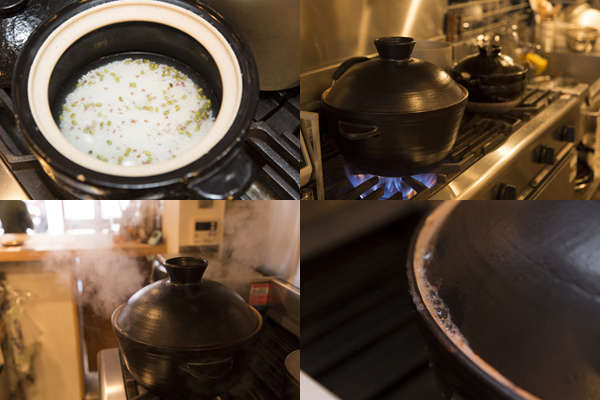
Today’s morning omusubi is a salted rice ball made with brown rice.
The brown rice is koshihikari rice from Noto, Ishikawa, with about a 20-percent blend of 30-percent polished rice to make it easier to eat. The rice is soaked in water for at least 12 hours before being cooked in a custom-made 1.8-liter Iga-yaki earthenware pot.
“A common complaint about brown rice is that it’s hard and difficult to eat, but that’s because the rice hasn’t been soaked long enough. After a lot of experimentation, we found that if you soak brown rice until the moisture penetrates to the core and it is just about to germinate, the rice becomes nutritionally more powerful, easier to digest, and more likely to maintain its flavor after it cools down.”
The brown rice is cooked over a high flame for about 10 minutes. The heat is turned off when a little bit of steam starts to bubble out from the edge of the earthenware pot. The amount of heat and water is adjusted slightly each time to account for the season and weather conditions.
The rice is left to steam for 20 minutes. Every day, Okura notes the soaking conditions and the type of blend as well as the varieties of rice used, how it cooks, and how it forms in the hand.
“Electric rice cookers can make delicious rice, but I enjoy the analog feel of cooking rice in an earthenware pot. Earthenware is also good for letting the moisture evaporate from the rice.”
Once cooked, the rice is moved to a round rice tray and immediately fluffed using a rice paddle to aid the evaporation of moisture. This step allows excess moisture to escape and prevents the rice from becoming sticky.
“When rice is cooked in an earthenware pot, many people look forward to the crispy burnt rice that forms at the bottom. But when you are making rice for omusubi, you can’t have any burnt rice. This is because the burnt rice becomes hard and dry with time.”
To form a rice ball, lightly moisten your hands with water first and then rub a pinch of salt into both hands. Take about an eighth of a rice bowl (about 100 grams) of the hot rice and mold it into shape with your hands.
“With brown rice, you should use a fair amount of pressure while molding the omusubi. With white rice, however, you should mold it with a light touch, like you are rolling it around in your hands, and only at the end should you press it firmly to mold it into its final shape.”
We tasted the finished rice balls straightaway. After taking a mouthful, it’s surprising how sticky the texture is. In your mouth, the omusubi quickly falls apart, reminding us once again that it is an aggregate of individual grains of rice. The more you chew, the more the sweetness wells up, and an irrepressible smile comes to your face.
The meal is rounded out with miso soup, made with a stock of aromatic dried bonito flakes and umami-rich kelp, mixed with green onions and thin sheets of Shonai-fu [dried gluten from Shonai], along with suguki Kyoto pickles, characterized by an elegant acidity, and Tokyo’s typical bettara-zuke pickles [daikon radish pickled in salted rice yeast], impressive for their sweetness and crunchiness. This is a 100-percent perfect Japanese breakfast.
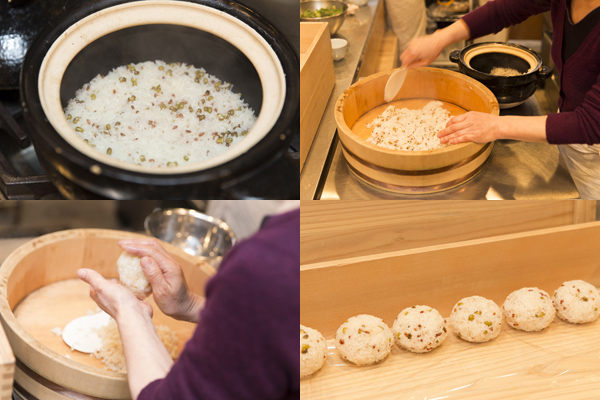
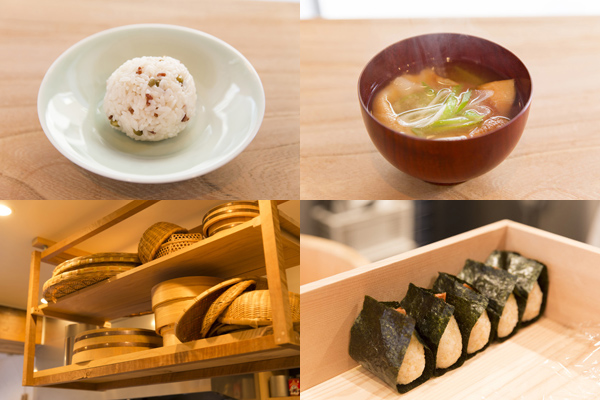
The word omusubi may have originated from Kamumusubi, the god of creation (musubi), who appears in the classical Kojiki and Nihon Shoki texts.
“Omusubi is in the tradition of the original form of human food — made by hand and consumed by hand. By naming such a simple fare after a god, it seems to express the literal relationships of life, which have connected nature to people, people to people, and people to things.” — Musunde Mimasen-ka? Omusubi [Making Your Own Rice Balls] by Okura Chieko (Pie Books)
Omusubi truly is Japanese soul food. Anyone in the country can have a conversation about rice balls.
“Everyone has their own stories to tell about omusubi, like what ingredients they prefer or that omusubi from this or that place was amazing. Miso soup is also a great conversation starter. It’s really remarkable when you think about it.”
Any kind of rice — white rice, brown rice, glutinous rice, rice with ingredients mixed in — is fine. And fillings range from the seasonal to the familiar. With a little ingenuity, the varieties of omusubi are endless. The top-sellers at Omusubi Marusankaku are salted rice balls and original rice balls that mix in finely chopped dried tomato. The choice of ingredients, designed to make the rice tastier, is formed from the wisdom of rice-loving Japanese. Omusubi are not just profound; they are fun to make and eat.
